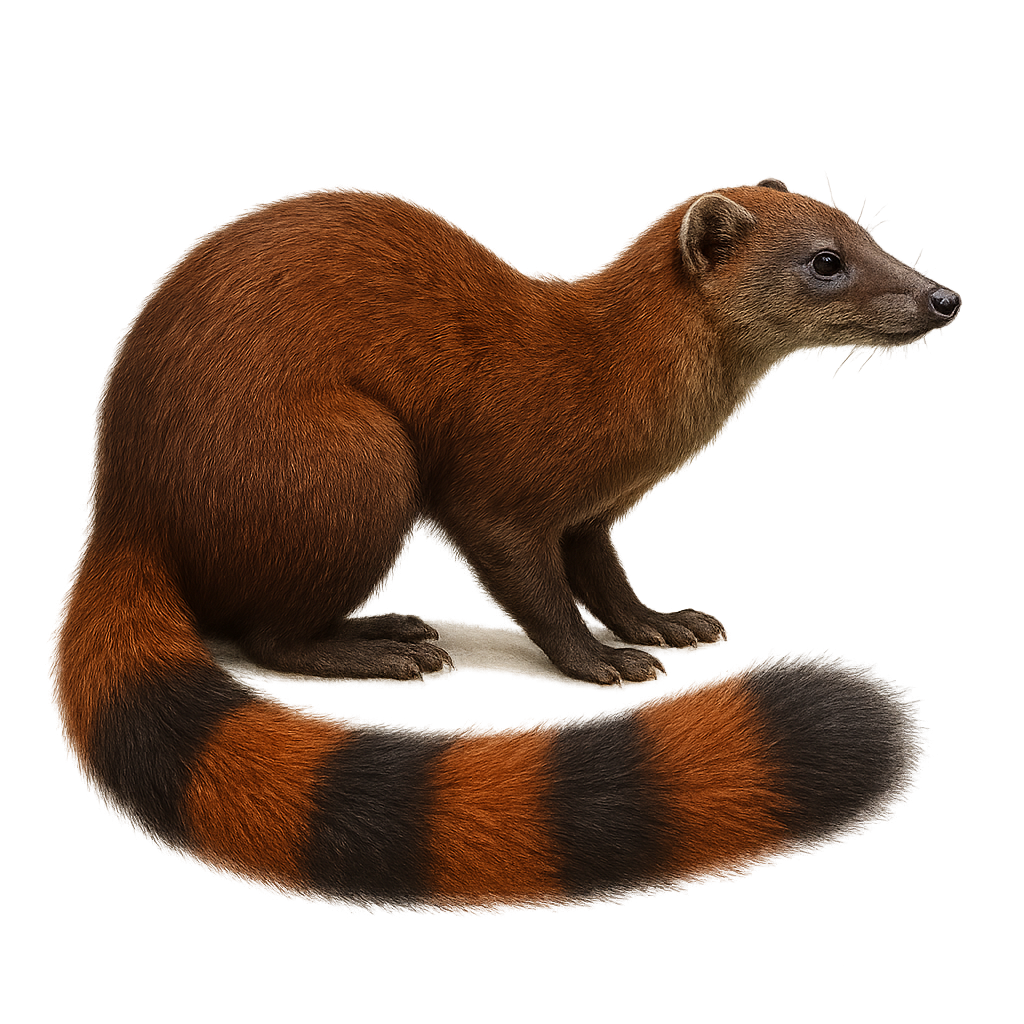Your wildlife photography guide.
Explore the ring-tailed mongoose in detail, study its behavior, prepare your shots.
Where to observe and photograph the ring-tailed mongoose in the wild
Learn where and when to spot the ring-tailed mongoose in the wild, how to identify the species based on distinctive features, and what natural environments it inhabits. The WildlifePhotographer app offers tailored photography tips that reflect the ring-tailed mongoose’s behavior, helping you capture better wildlife images. Explore the full species profile for key information including description, habitat, active periods, and approach techniques.
Ring-tailed Mongoose
Scientific name: Galidia elegans

IUCN Status: Near Threatened
Family: EUPELERIDAE
Group: Mammals
Sensitivity to human approach: Suspicious
Minimum approach distance: 10 m
Rut period: September to October
Gestation: 65-70 jours
Births: November to December
Habitat:
humid forests, wooded areas, mountain forests
Activity period :
Primarily active during the day, with peak activity in the morning and late afternoon.
Identification and description:
The ring-tailed mongoose, Galidia elegans, is a small carnivore endemic to Madagascar. It is distinguished by its black and russet ringed tail, giving it a unique appearance. Its fur is primarily reddish-brown, with darker shades on the back. It measures about 32 to 38 cm in length, excluding its tail, which can reach 28 to 33 cm. Agile and lively, it is often observed in the island's humid forests and wooded areas. It primarily feeds on small animals, insects, and fruits. Although its habitat is threatened by deforestation, it is still relatively widespread in some regions.
Recommended lens:
300mm – adjust based on distance, desired framing (portrait or habitat), and approach conditions.
Photography tips:
To photograph the ring-tailed mongoose, it is advisable to use a telephoto lens of at least 300 mm to capture detailed images from a distance. Look for it in Madagascar's humid forests, where it is primarily active during the day. Be patient and discreet, as it can be suspicious. Use a tripod to stabilize your camera and wait for it to move into a well-lit area to get sharp shots. The natural light of the morning or afternoon can offer ideal conditions for photography.
The WildlifePhotographer App is coming soon!
Be the first to explore the best nature spots, track rutting seasons, log your observations, and observe more wildlife.
Already 1 429 wildlife lovers subscribed worldwide

